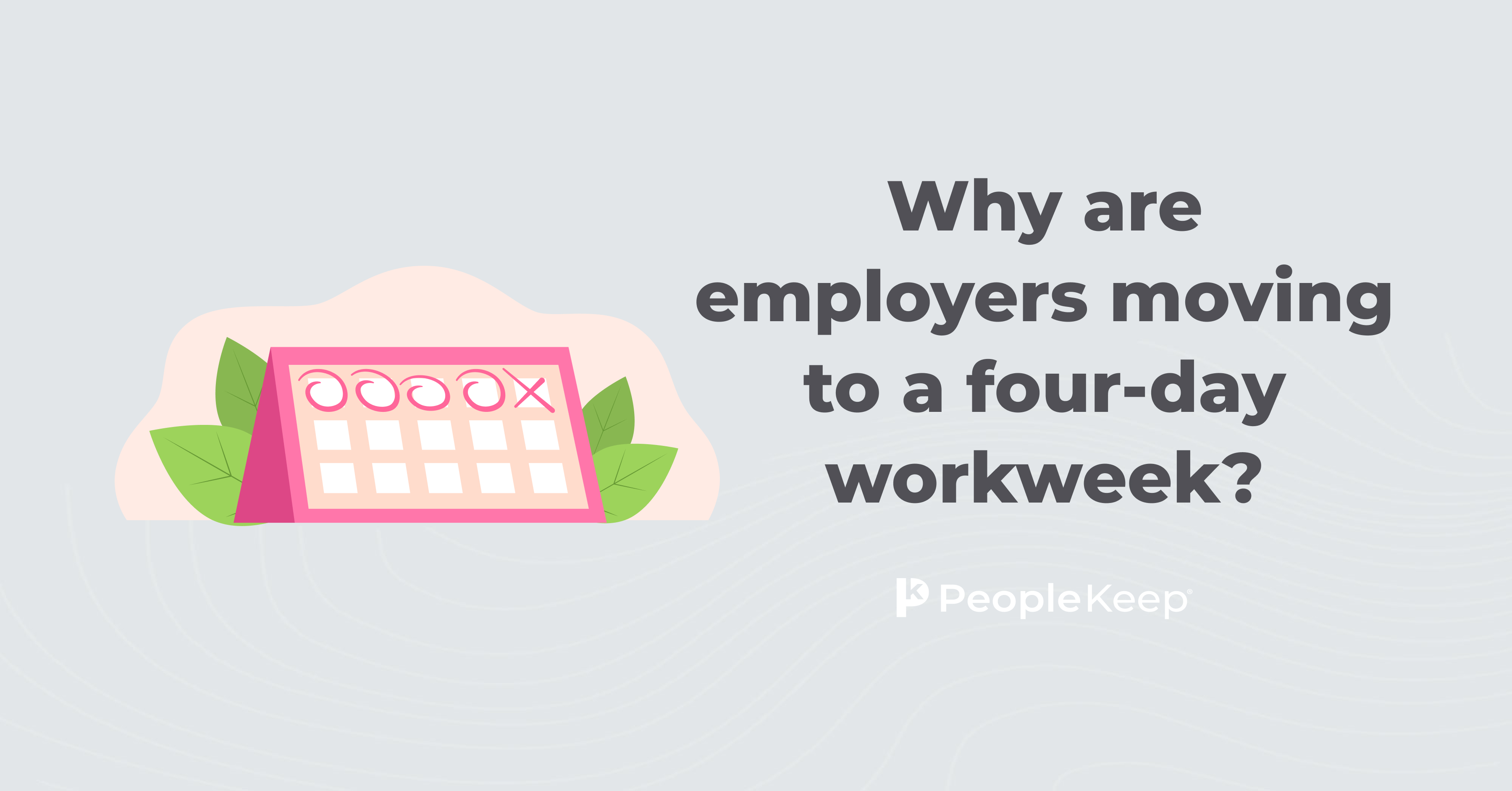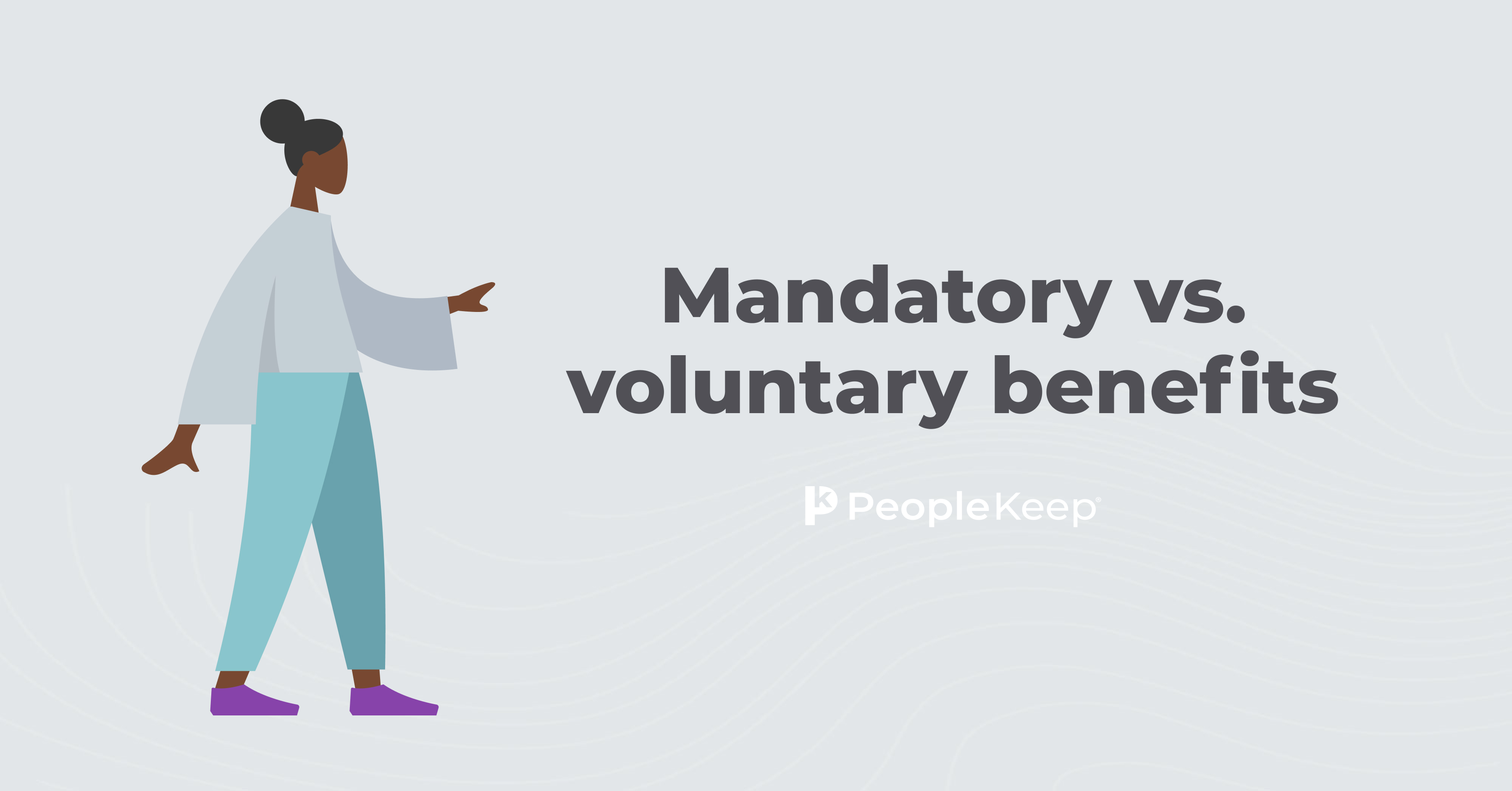What is a 9/80 work schedule?
By Elizabeth Walker on October 25, 2024 at 8:00 AM
Most people are familiar with the traditional nine-to-five, 40-hour workweek. But more modern, flexible work schedules are becoming popular. According to SHRM, 67% of employers offered work schedule flexibility in 20231.
A common type of flex arrangement is the 9/80 work schedule. This format can improve work-life balance, giving employees more time to recharge. Productivity and engagement also improve when your entire workforce is rested and focused. But how can you know if a 9/80 schedule is the right choice for your company?
In this blog post, you’ll learn:
- How a 9/80 schedule works for organizations.
- The pros and cons of a 9/80 work schedule.
- How to determine if a 9/80 schedule is right for your business.
What is a flexible work schedule?
Before we discuss a 9/80 work arrangement, let’s define a flexible work schedule. A flexible work schedule allows employees to arrange their work hours in a way that best suits their personal lives. Employees can vary the times they begin and end their workday, optimizing work-life balance.
Here are some examples of alternative work schedules:
- An employee works from 6 a.m. to 2 p.m. to spend more time with their children after school.
- A team works four days a week but works longer hours during those days.
- An employee opts to work a 3 p.m. to 11 p.m. shift schedule to handle morning commitments during the day.
A flex schedule isn’t synonymous with working remotely. But, remote work can be a type of flex schedule. Your flex schedule policy can allow employees to work fully remotely or use a hybrid method. A hybrid model enables employees to mix remote work with in-office work.
What is a 9/80 work schedule agreement?
A 9/80 work schedule compresses the standard five-day workweek. With this schedule, employees work 80 hours over nine days instead of 80 hours over ten days.
In total, an employee works eight nine-hour days and one eight-hour day. At the end of the second workweek, they have one extra day off. After the day off, the schedule repeats for the next two weeks.
The 9/80 model differs from the popular 4/10 schedule. Four-day workweeks require employees to work four 10-hour days before taking the next three days off.
This sample schedule shows the most common way to structure a 9/80 work model:
|
Monday |
Tuesday |
Wednesday |
Thursday |
Friday |
Total hours worked |
|
|
Week 1 |
9 hours |
9 hours |
9 hours |
9 hours |
8 hours |
44 hours |
|
Week 2 |
9 hours |
9 hours |
9 hours |
9 hours |
Day off |
36 hours |
While this is a typical breakdown, you don’t have to follow it strictly. For example, you could let your employees choose their day off (e.g. if they prefer Wednesdays instead of Fridays).
As long as four days during the week have nine work hours each, equaling 80 hours over two weeks, you have a 9/80 work schedule.
What are the pros of a 9/80 work schedule?
Many employers think that flex scheduling can’t work at their company. But, there are many advantages to allowing employees to use the 9/80 work model.
Improved work-life balance
With a standard 9/80 work schedule, employees have every other Friday off, equaling 26 three-day weekends a year. With this extra time off, your staff can spend more time rejuvenating their minds, taking vacations, and spending time with loved ones.
Time away from the office also helps reduce burnout. About one million U.S. employees miss work every day due to stress2. A more balanced work schedule can keep employees engaged and provide more time off to rest and recover.
Increased employee productivity
Using a 9/80 schedule can result in enhanced productivity. The extra day off at the end of the two weeks allows employees to arrange their days better to work more efficiently.
The increase in flexibility and employee productivity has a long-term impact as well. One study found that employees with greater job flexibility were 25% less likely to experience severe mental distress3. The 9/80 schedule allows employees to choose how to spend their time so they’re not overwhelmed during the day.
Higher employee recruitment and retention
Standard schedules are no longer helping to attract and retain talented employees. Our 2024 Employee Benefits Survey found that 57% of employees believe flex scheduling or remote work is an extremely important benefit. This is especially true among younger generations. Yet, our 2022 survey found that only 52% of small businesses offer it.
Offering an alternative work schedule and other flexible employee benefits is a valuable tool to make your company more attractive. It can help you boost employee satisfaction and become an employer of choice. These days, job seekers want a variety of fringe benefits. So, ensure your company provides the best work-life balance and perks possible.
Greater flexibility and trust
The 9/80 schedule strikes a balance between a fixed schedule for employers and greater flexibility for employees.
A compressed work schedule allows employees to complete personal commitments they wouldn’t usually be able to do during a traditional work day, such as picking a child up from school. Letting employees choose how to structure their schedule gives them ownership over their jobs and shows you trust them to manage their time.
Reduced commutes
With an alternative schedule, your employees may spend less time commuting to work. The longer work day may shift their commute out of peak travel times by coming in earlier or staying later. This can reduce stress and waste fewer hours sitting in traffic compared to a standard work schedule.
With the extra day off, your employees won’t need to travel to and from work that day. Not only is a reduced commute a perk for the environment, but employees spend less money paying for gas or other transportation, which improves morale.
What are the cons of a 9/80 work schedule?
While a compressed schedule has many potential benefits, it doesn’t mean there aren’t downsides to consider. Let’s review some of those below.
Longer workdays
Many employees may appreciate the 9/80 work schedule. But not everyone will be happy about it. Some workers may not notice the extra hour. But others may feel they don’t have enough downtime in their evenings to balance out the time they spend working each day.
A nine-hour day may not seem like much to most people. However, sour staff may experience burnout, lower employee morale, and job frustration. So, before implementing this flexible schedule at your company, survey your staff to see what they think.
Poor shift coverages
Companies that require consistent staff to meet customer needs, such as the retail industry, may have trouble with a 9/80 schedule. Even if you map out which employees get which day off every two weeks, conflict can result over who gets a weekday off and who gets a long weekend.
Small employers face similar availability issues. Depending on your staff size, a 9/80 schedule could mean there aren’t enough workers to keep your business running smoothly, especially during the extra days off each month.
Payroll and overtime
A 9/80 work schedule consists of 44 hours in the first week and 36 hours in the second. So, you must be careful with your calculations to avoid paying extra payroll. For example, hourly employees usually get overtime wages if they work more than 40 hours per week. With a 9/80 model, you may end up paying four hours of overtime during the 44-hour week to hourly employees.
The best way to avoid overtime is by creating an official workweek for non-exempt employees. The Fair Labor Standards Act (FLSA) allows employers to designate workweeks4.
You can also run your payroll on a two-week period. Your employees would work four nine-hour days followed by one eight-hour day. But you’d apply the first half of the eight-hour workday to the first week of payroll and the second half of the day to the second week of payroll.
This way, you’re not paying overtime, and your employees can take their second Friday off without losing hours. But if you allow your employees to choose which day will be their day off, you'll need to develop a custom system.
Some states, like California, have legal requirements that say overtime is any hours worked over eight hours a day. So, work with your HR team to ensure your company stays compliant with labor laws and overtime rules.
Paid time off (PTO)
The 9/80 schedule also requires a different paid time off (PTO) policy. You need to reorganize your PTO policy for proper tracking and pay, which may be more hassle than you want.
For example, if a non-exempt employee takes a vacation day on a nine-hour workday, they lose more work than taking one day off on an eight-hour day. The same situation occurs if a national public holiday falls in the middle of the week.
You can resolve this problem in one of two ways. You can count each nine-hour day as eight hours of work and one hour of PTO. Or you could restructure your PTO policy so that one day of PTO equals nine work hours instead of eight. Either way, you must find a solution before switching to a 9/80 schedule.
Unavailable customers and business partners
You and your staff may favor the 9/80 schedule. But your customers and business partners may not be so happy. Depending on your industry, your company may have customers and business associates who don’t use your services during your new work schedule’s extra hours. Similarly, if your company has a fixed day off every two weeks, your customers may feel frustrated.
In either case, this could result in lower productivity for your employees working when your business consultants are not, reducing efficiency. It could even lead to lost revenue if your customers go elsewhere when you’re closed.
Is a 9/80 work schedule right for your business?
Moving to a 9/80 schedule is no small feat. It’s an important decision that will affect your entire company and involve major readjusting. So, it’s vital to consider all the details before adopting it.
Before implementing a flex work schedule, review the following areas of your company:
- Business operations
- You must consider your entire workforce size, weekly staff requirements, and business and customer needs.
- Business industry
- This type of schedule is best if your staff consists primarily of individuals who work at their own pace, such as software developers, accountants, and graphic designers.
- A 9/80 schedule may not be best for the following industries:
- Retail
- Hospitality
- Manufacturing
- Construction
- Other customer-focused industries that need consistent schedules
- Employee feedback
- Get your staff’s opinion on the 9/80 schedule. Ask how they think it will impact their productivity, which ways they work best, and their preferred days off.
- You should also get buy-in from your leadership team. They can help navigate staff concerns and help if problems arise.
- Resources and services
- A good HR team can help employees move to the new work schedule. They can also update your company procedures, PTO policy, and employee handbook.
- Run a trial period
- Before fully installing the 9/80 schedule, move specific employees or departments to it first to see how it runs and resolve issues.
How can a health reimbursement arrangement (HRA) support your employees’ need for flexibility?
Implementing a 9/80 work schedule is an excellent way to make your company more attractive to talented employees. But you shouldn’t stop there. Our 2024 Employee Benefits Survey found that 92% of workers say health benefits are extremely important to them. So, if you’re looking for a flexible health benefit, consider a health reimbursement arrangement (HRA).
An HRA is an employer-funded health benefit that reimburses employees for health insurance premiums and qualified out-of-pocket medical expenses. With an HRA, you give your staff a set monthly allowance. They pay for insurance premiums and medical care on their own. Then, once they make an approved purchase, they submit the expense to you. You reimburse them tax-free up to their allowance amount.
The following are three HRAs that you can offer with PeopleKeep:
- The qualified small employer HRA (QSEHRA)
- The individual coverage HRA (ICHRA)
- The group coverage HRA (GCHRA)
These benefits are flexible enough to work for business owners of all staff sizes, locations, and budgets. You can even decide what medical expenses to allow for reimbursement.
HRAs are also beneficial for your employees. They can choose their preferred medical services and items, giving them more control over their healthcare outcomes and finances.
Conclusion
Whether you want to increase retention or boost employee productivity, a 9/80 work schedule is a great way to help you reach your goals. Implementing this flex schedule at your organization may be challenging. But letting your employees take an extra day off to rest and recover has more advantages than downsides.
If your company needs flexible benefits to complement a 9/80 work schedule, PeopleKeep can help. Contact our HRA specialists, and we’ll set you up with a personalized HRA to make your benefits package more desirable.
This blog post was originally published on October 26, 2022. It was last updated on October 25, 2024.
Check out more resources
See these related articles

20 affordable benefits to offer
Looking for affordable ways to enhance your employee benefits package? Explore our list of 20 budget-friendly options to keep your team happy and motivated.

Why are employers moving to a four-day workweek?
Learn about the growing popularity of a four-day workweek among employers and the potential advantages it offers for both employees and businesses.

Mandatory vs. voluntary benefits
Curious about the difference between mandatory and voluntary benefits? Explore how each type supports employees and boosts your overall benefits package.



